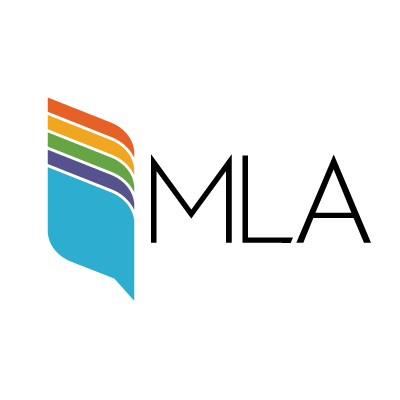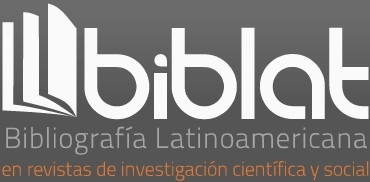How is a diagram seen by those who make it? Approach of postures and tensions in informative discourses of diagrams
DOI:
https://doi.org/10.35494/topsem.2017.2.38.512Keywords:
diagrams, discourse analysis, informationAbstract
The informative diagrams as cultural objects are related to a specific discursive production; this discourse confers consistence to the social field that creates the diagrams. In detail, the discourse establishes the historical and ideological guidelines that support the creation, implementation and use of diagrams as an actual object. But the informative diagrams discourse is far from the desired theoretical and conceptual homogeneity, indeed, it is full of tensions and disputes about hegemony into the discursive field. In fact, different positions, with its respective followers and promoters, defend specific conceptions about ethics, esthetics, communication practice, information management, among others aspects. This article describes and contextualizes three positions with the aim to understand some discursive tensions and the impacts of these tensions into the diagrammatic representations.Downloads
References
BAJTIN, Mijail (1982). Estética de la creación verbal. México: Siglo
XXI.
BARNHUST, Kevin (1998). “Periodismo visual (infografía– 5)”, Revista Latina de Comunicación Social, Año 1, núm. 7. Disponible en: http://www.ull.es/publicaciones /latina/a/62kevin.vis.htm
BOUNEGRU, Liliana (2012). “Data journalism in perspective”. En Gray, Jonathan; Bounegru, Liliana; Chambers, Lucy (edit.) The data Journalism Handbook. Sebastopol, California: O’Reilly Media.
BOUNFORD, Trevor (2001). Diagramas digitales. Cómo diseñar y presentar información gráfica. Barcelona: Gustavo Gili.
CAIRO, Alberto (2008). Infografía 2.0: Visualización interactiva de
información en prensa. Madrid: Alamout Publishing House.
CIUCCARELLI, Paolo (2012). “Turning visualisations into stories an ‘big pictures’”. En Julius Wiedemann (edit.). Information Graphics.
Colonia: Taschen, pp. 77-95.
COLLE, Raymond (enero-junio 2004). “Infografía: tipologías”, Revista Latina de Comunicación Social, núm. 57. Disponible en:
http://www.ull.es/publicaciones/latina/colle2004/20040557colle.
htm
GEISLER, Gary (1998). Making information more accesible: A Surrey of information visualization applications and techniques. Recuperado de: http://www.ils.unc.edu/~geisg/info/infovis/paper.
GONZÁLEZ, Xaquín (2012). “Multiculturalismo y tenacidad en The
New York Times. Así funciona la sección de infografía más admirada del mundo”. En SND-E (ed.). Malofiej 19. Premios internacionales de infografía. Pamplona: Universidad de Navarra.
pp. 52-65.
GRIMWADE, John (2014). “Qué viene a continuación. ¿Hacia dónde se dirige la infografía? 22 opiniones”. En SND-E (ed.). Malofiej 21. Premios internacionales de infografía. Pamplona: Universidad de Navarra, pp. 6-23.
HEUMANN, Thomas; STOLL, Michael (2013). “Thomas Heumann. La infografía: mi juego favorito”. En SND-E (ed.). Malofiej 20. Premios internacionales de infografía. Pamplona: Universidad de
Navarra., pp. 24-43.
HOLMES, Nigel; GRIMWADE, John (2012). “A conversation between John Grimwade and Nigel Holmes”. En SND-E (ed.) Infographics. A visual definition. Pamplona: Universidad de Navarra. pp. 9-14.
HORN, Robert (1999). “Information design: Emergence of a new profession”. En Jacobson, R. (ed.). Information Design. Cambridge, MA.: MIT Press.
ILLINSKY, Noah; STEELE, Julia (2011). Designing data visualizations. Intentional communication from data to display. Sebastopol, CA: O’Reilly Media.
LETURIA, Elio (1998). “¿Qué es infografía?”, Revista Latina de
Comunicación Social, Año 1, núm. 4. Disponible en: http://www.
ull.es/publicaciones/latina/z8/r4el.htm
MANOVICH, Lev (enero 2008). “La visualización de datos como nueva abstracción y antisublime”, Revista Estudios Visuales, núm. 5, pp. 126-135.
MOLES, Abraham (1992). “Introducción al grafismo funcional”. En
Moles, Abraham y Janiszewski, Luc (edit.). Grafismo funcional.
Barcelona: CAEAC, pp. 9-37.
PABLOS, José Manuel de (1999). Infoperiodismo. El periodista como creador de infografía. Madrid: Síntesis.
PEIRCE, Charles Sanders (1958). Collected Papers of Charles Sanders Peirce. Charles Harthorne and Paul Weiss (eds.), vols. 1–6; Arthur W. Burks (ed.), vols. 7–8. Cambridge, MA.: Harvard University Press.
RENDGEN, Sandra (2012). “Introduction”. En Wiedemann, J. (ed.).
Information Graphics. Colonia: Taschen, pp. 7-36.
ROITBERG, Gastón (2013). “El regreso a las fuentes: cuando los datos cuentan historias relevantes y tangibles”. En Luchessi, Lila
(coord.). Calidad Informativa. Escenarios de postcrisis. Buenos
Aires: La Crujía, pp. 33-48.
SHEDROFF, Nathan (2001). “Una vista general de la comprensión”. En Wurman, R. S. (ed.). Angustia informativa. Madrid: Prentice Hall, pp. 27-29.
SIMON, Roger (2012). “How data chaged journalism”. En Julius Wiedemann (ed.). Information Graphics. Colonia: Taschen, pp. 57-76.
STEIMBERG, Oscar (1998). Semiótica de los medios masivos. El pasaje a los medios de los géneros populares. Buenos Aires: Atuel.
TUFTE, Edward (2006). Beautiful evidence. Cheshire, CT: Graphic
Press.
VALERO, José Luis (2000). “La infografía de prensa”, Revista Latina de Comunicación Social, Año 3, núm. 30, pp. 135-198.
___________ (2008). “La infografía digital en el ciberperiodismo”, Revista Latina Revista de Comunicación Social, núm. 63, pp. 492-504.
WINKLER, Dietmar (2011). “Hasta el hombre de las cavernas podría hacerlo mejor”. En Frascara, J. (comp.). ¿Qué es el diseño de información? Buenos Aires: Infinito.
Published
How to Cite
Issue
Section
License

Tópicos del Seminario is licensed under a Creative Commons Reconocimiento-NoComercial-CompartirIgual 4.0 Internacional License.














